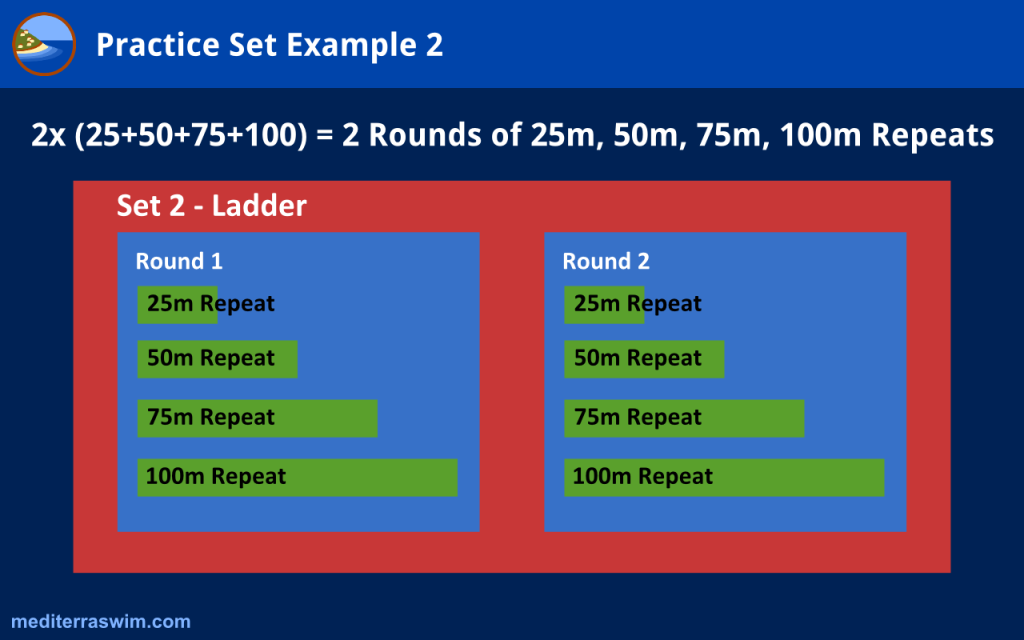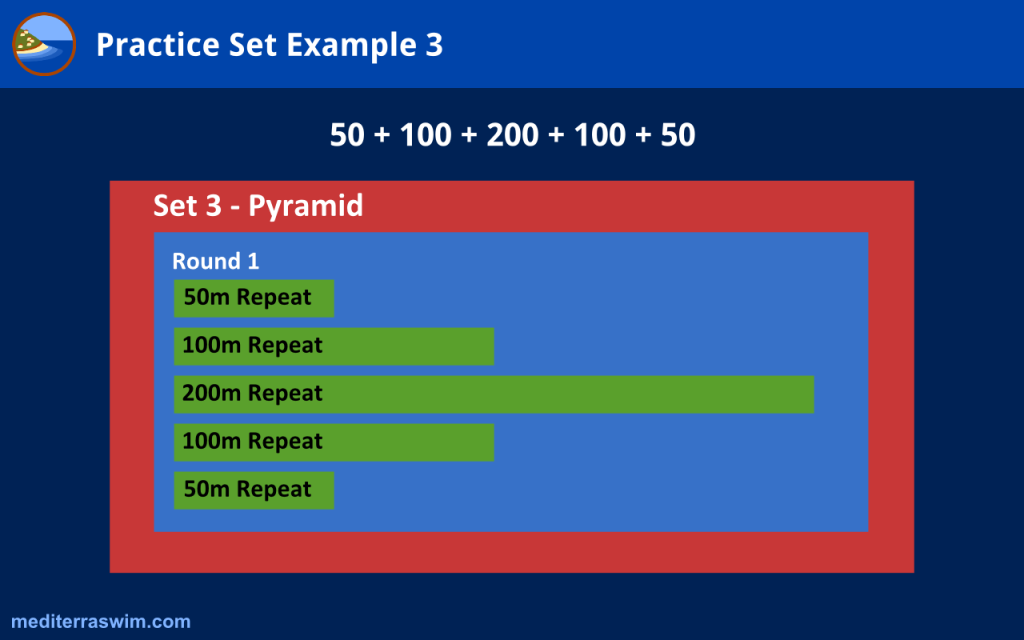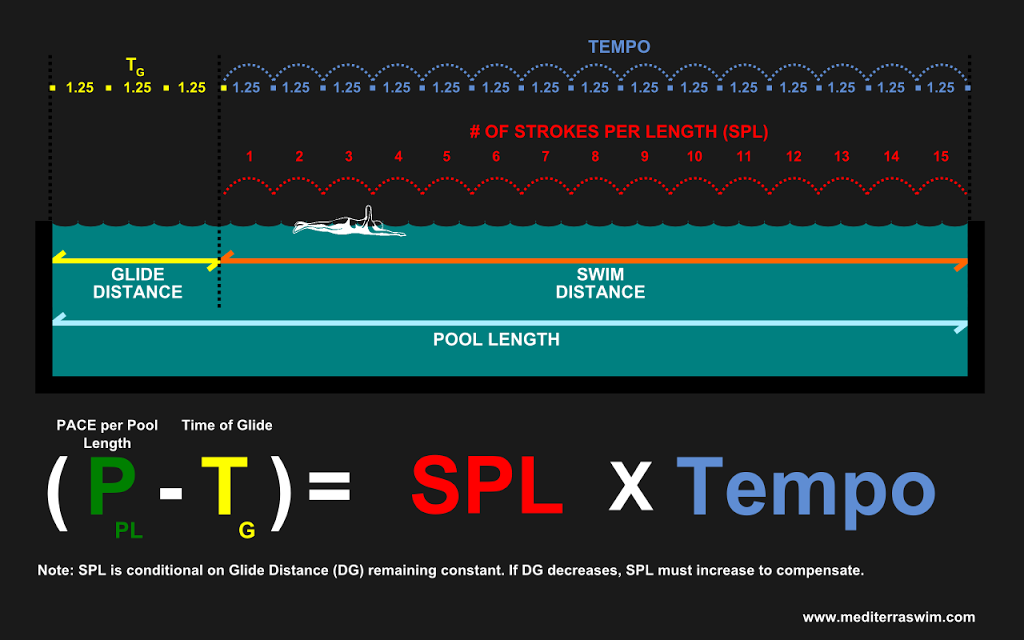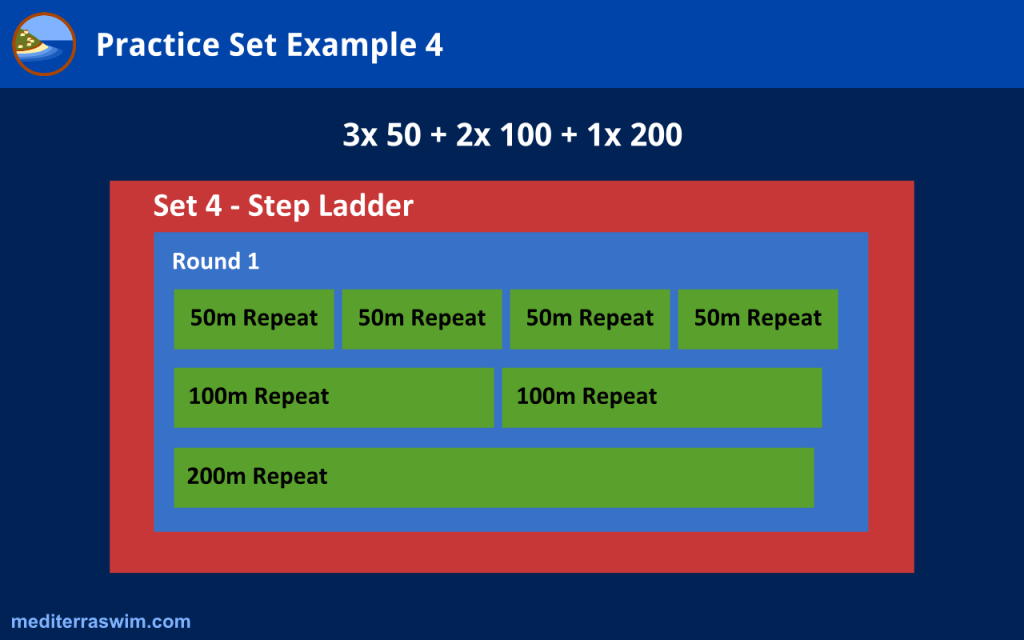Forums › Library › Knowledge Base › Glossary Of Practice Terms
Please type your comments directly in the reply box - DO NOT copy/paste text from somewhere else into the reply boxes - this will also copy the code behind your copied text and publish that with your reply, making it impossible to read. Our apology for the inconvenience, but we don't see a convenient way of fixing this yet.
Tagged: glossary, practice, terminology
-
AuthorPosts
-
August 1, 2014 at 15:05 #2620
Admin Mediterra
KeymasterHere are some particular terms used in TI to describe the elements of sets or practices. By using standard terms to describe sets we design, any coach or swimmer can quickly understand their purpose when they’re referenced in the manual, or a practice description. As you become more involved in the practice of TI these will become quite familiar.
Ascending
“Ascending” means going a bit slower on each repeat or on each round.
Example: “Swim 4x 100 meters ascending,” means swimming whole stroke for 100m, and do it four times in a row (four repeats) with a rest in between. You would swim a little slower on each consecutive repeat.
Challenge Level or Complexity Level
Not only do the muscles have to work, the brain needs to control movements with precision, even when it gets harder to move. When the swim gets difficult it is difficult not just for the muscles but also for the brain. One might be less able to handle the challenge than the other. Challenge or complexity is judged not just in terms of how hard it was for the muscles to work, but also how hard it was for the brain to maintain precise and consistent control over the movements.
Cognitive Difficulty
Designing a set so it tests or taxes the ability of the swimmer to handle its thinking requirements. While all Deep Practice sets should incorporate elements of cognitive difficulty, a particularly good use of such sets for recovery/restoration when an athlete is somewhat fatigued from a race or training that has been physically taxing. When a set is easy on the body, but mentally demanding, I refer to it as ‘exacting-but-not-exhausting.’ Such sets can leave the athlete feeling both mentally and physically energized.
Cycle
A cycle is another way to divide up a set into parts, with rest between. For example, we might assign set that has ‘3 rounds, with 2 cycles’ in each of those rounds. On each cycle you may do the same activity, but in one cycle you may (for example) pay attention to the left side of the body and in the next cycle you pay attention to the right side of the body. Cycles keep the same activity, but point out your opportunity to change attention.
Descending
“Descending” means going a bit faster on each repeat or on each round.
Example: “Swim 4x 100 meters descending,” means swimming whole stroke for 100m, and do it four times in a row (four repeats) with a rest in between. You would swim a little faster on each consecutive repeat.
Drill
A drill is an activity that isolates a movement pattern or part of the stroke, slowing down time and making it easier to focus. A drill can be stationary (not moving forward), or active.
Focal Point (FP)
A Focal Point is an image you create in your mind in order to give specific instructions to muscles in your body.
Ladder

In a Ladder set the distances of each repeat increases – usually short to longer distance. Like climbing up a ladder, as you get higher, the distance from the ground gets farther.
Example: [25 + 50 + 75 + 100]. First repeat is 25m, the next is 50m, the next is 75m, and the last repeat is 100m.
Increasing distance is a systematic way of introducing an element of task difficulty. E.G. As distance increases, it becomes increasingly difficult to maintain an SPL, stay comfortable and efficient at a particular Tempo, or, particularly, hold a particular SPL-Tempo combination.
Neurally-Oriented Training
Traditional training is physiologically-oriented—i.e. designed to work heart, lungs, and muscles. TI training is distinguished by being neurally-oriented. I.E. Designed to create specific, beneficial adaptations in brain and nervous system. The heart, lungs and
muscles still receive physiological stimulus.Pace
Pace is the average amount of time you take to swim a certain distance. Over the course of 1000 meter swim, you may swim a pace of 25 seconds per 25 meters, or 100 seconds (1 min 40 seconds) per 100 meters which equals a total time of 16 min 40 seconds for 1000 m.
Pyramid
In a Pyramid set one of the variables (like distance or tempo) will increases for each repeat for a while, then decreases with each repeat back to the starting point. Pyramids are usually symmetrical so that you do the same amount of work on the way up, and the way down.
Examples [25 + 50 + 75 + 100 + 75 + 50 + 25]. The first repeat is 25m, then going up to 100m for the fourth repeat, then back down to 25m for the last repeat.
[4x 25 + 3x 50 + 2x 75 + 1x 100 + 2x 75 + 3x 50 + 4x 25]. The first four repeats are 25m, then the next three repeats are 50m, then the next two repeats are 75m, up to 100m, then back down to 4x 25m.
You can also repeat the longest distance before decreasing.
The most common goal of a Pyramid is to minimize change in one metric—such as Tempo+SPL Combo—as distance increases, then improve that metric as distance decreases again—aiming to improve it each time distance decreases on the way down.
Rehearsal
A rehearsal is some exercise that allows you to work on some small part of the stroke without floating on the water, or even being in the water. A rehearsal can be done standing up or laying down on the ground, or standing partly submerged in the water.
Repeat
When you have a long swim broken down into smaller swims with rest in between, we may call those smaller pieces “repeats”.
A swim becomes a repeat when included in a longer series of swims, usually called a set.
Example: Swim 3x 500 with 15s rest. This is a 1500m swim broken down into three 500m pieces with 15 seconds rest between reach repeat.
Rest Interval
A rest interval is the amount of time you will allow your body and brain to recover some strength between repeats, and between sets.
A rest interval can be counted in seconds, or in number of deep breaths.
A rest interval can be passive (sitting still at the wall), or active (doing a drill or activity that is much lower in intensity).
Round
A round is the number of times you will repeat a set. Often you will be asked to choose a different focal point for each round, because it is a convenient place to change where you place your attention.
Example: 3 rounds of [4x 25 + 3x 50 + 2x 75 + 1x 100]. This means you would go through the set ‘4x 25 + 3x 50 + 2x 75 + 1x 100’ three times, usually taking some rest in between each one.
In neurally-oriented training, the intention in organizing a task as multiple rounds is to take advantage of the brain’s ability to quickly learn a task. On the first round, the brain figures out the problem on the first round, comes up with a solution on the second round, and optimizes the solution on the third round. For this reason, a set of this type should usually include at least three rounds. Sometimes this type of set should be planned as open-ended.
I.E. Keep adding rounds as long as you feel yourself learning or improving at the task. It would be rare to gain further benefits beyond five rounds.
Set
A set is a series of repeats.
Sets are organized to produce a particular adaptation; in most of the traditional swimming world, the intended adaptation is physiological or metabolic.
Example: [10x 50m] is a set of ten 50m repeats. [5x 100m] is a set of five 100m repeats. [100x 100m] is a set of one hundred 100m repeats!!! Each group of repeats between brackets is a set.
In TI, the intended adaptation always targets the nervous system first and the metabolic system second. This results in increased complexity and demands focus. This form of set is called a task.
Split
The total time for a swim can be broken down into smaller timed pieces called ‘splits’ or ‘time splits’.
For example a swimmer may perform a 1000 meter swim while a friend or coach may take her time split at each 100 meter mark during that swim. Those would be 100 meter splits.
Stroke Length (SL)
SL = Stroke Length. SL measures how far you travel on each stroke.
Strokes Per Length (SPL)
SPL = Strokes Per Length = Stroke Count. SPL measures how many strokes you take to get across the pool. SPL is related to Stroke Length (SL) but it is not exactly the same. SPL is dependent on the length of the particular pool you are counting stroke in.
Step-Ladder
A Step version of a Ladder set is one in which there are multiple repeats at each distance, except for the final (longest) repeat.
Example: [4×25+3×50+2×75+1×100]. The purpose of a Step-Ladder set is to make it somewhat easier to adapt to the challenge in the task. Including several reps at shorter distances gives the swimmer more opportunity to prepare for each successive step. StepLadders are ideal for introducing a new task or new level of difficulty. When the student has adapted successfully to a Step-Ladder set, she can then
attempt it as a regular Ladder set—just a single rep at each distance.Swim
We use this term in referring to a single swim—as distinguished from a series of repeats.
Example: Swim 1 x 500m @ 1.20 Tempo. Try to keep SPL within +2 of 1st length.
Task
We’ve adopted this term in TI, to distinguish the contrasting nature of the sets we give. When a set is designed according to principles of Deep Practice it becomes a task. To be described as a task, a set should include elements of problem-solving, ‘cognitive difficulty,’ or neural adaptation that have been documented as critical to improving or hard-wiring skills.
Tempo
Tempo is the number of seconds between each arm stroke. Think of it like timing a musician using a metronome.
Whole Stroke
This refers to normal swimming with both arms and the entire body, in contrast to doing a drill.
-
This topic was modified 7 years ago by
Mat Hudson.
-
This topic was modified 7 years ago by
-
AuthorPosts
- The topic ‘Glossary Of Practice Terms’ is closed to new replies.




